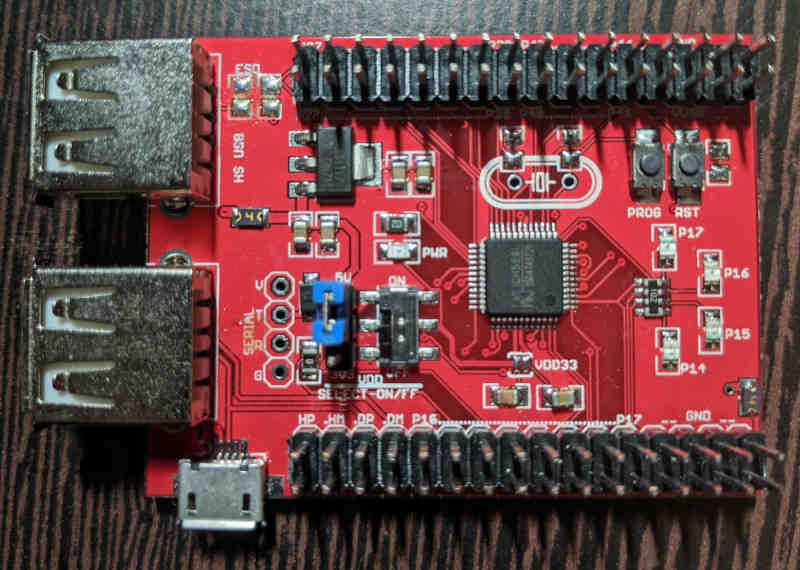CH559 Programming (Part 1): Setup and blinky
The CH559 is a cheap 8051 based microcontroller with USB Host/Device capability and comes with plenty of Peripherals. CH559 is the most advance MCU in the CH55x series, the reason I am starting with the most advanced one because it is a Flash variant unlike other MCUs in the CH55x series.
In this tutorial, we will learn the bare minimum to get started without using any vendor-supplied libraries. I will start by getting to know the hardware and toolchain, later will write a simple LED blink example.
Hardware
There are several ways to start working with CH559. I find Electrodragon’s CH559 USB MCU Mini DEV Board easiest to get and cheap. It breakout all the pins and comes with 4 LEDs for demo.

Setting up the toolchain
Before we do anything, we need to find a compiler and a way to program this MCU. Unfortunately, a GCC compiler is not available for 8051 microcontrollers. Few commercial compilers available for these processors, some of them have a free version with a code size limit, but all of them are Windows only. Luckily, SDCC support 8051 based MCUs and its Open Source.
To program this MCU, we don’t need any extra hardware as it comes with a USB Bootloader built-in. I found Rgwan’s LibreCH551 pretty straight forward to use. Now its time to download all the necessary tools:
Extract SDCC under ~/local/sdcc and add the following lines to your .bashrc file (Replace “<username>” with your “username”).
export PATH=$PATH:/home/<username>/local/sdcc/binIf you have done the above steps correctly, you should be able to run sdcc --version.
For the LibreCH551 have to make it from the source. Clone the Repo and go under librech551/usbisp and build the tool using make command. You will find the wchisptool executable in the same folder.
Note. You may need to install the libusb-1.0-dev package if not already installed in your system.
Now copy wchisptool binary to ~/local/librech551/bin and add the following lines to your .bashrc file (Replace “<username>” with your “username”).
export PATH=$PATH:/home/<username>/local/librech551/binWe need to set up udev rules for USB bootloader so that we don’t have to run wchisptool with root privilege. Create a file /etc/udev/rules.d/99-ch559.rules and add the following lines to the file.
# CH559
ATTRS{idVendor}=="4348", ATTRS{idProduct}=="55e0", MODE="0666"
Now run udevadm control --reload-rules && udevadm trigger as a root to restart udev service.
Everything is memory-mapped
You can access all Peripherals I/O and registers using memory addressing. SDCC conveniently provides two Macro SFR() and SBIT() to access the SFR(Special Function Register) and Bit addressable memory.
We need Datasheet for this MCU to know its pinout and register map. Unfortunately, WCH only provides Datasheet in Chinese. I have translated the Datasheet, you can find it here.
Let’s write our first example. Create a file blink.c and add the following code.
--------------------------- blink.c ---------------------------
| |
Save the blink.c file and compile it using the following command.
sdcc -V -mmcs51 --model-small --xram-size 0x1800 --xram-loc 0x0000 --code-size 0xF000 blink.cWe need to convert the blinkihx file to blink.bin for wchisptool to program the CH559.
objcopy -I ihex -O binary blink.ihx blink.binNow its time to program the CH559 dev board with our blink example. Press the PROG button while plugging the USB cable to your PC then release the PROG button to put CH559 into Bootloader mode. Use the following command to program the MCU.
wchisptool -f blink.bin -gCongratulations! We’ve just written our first LED blink example.
